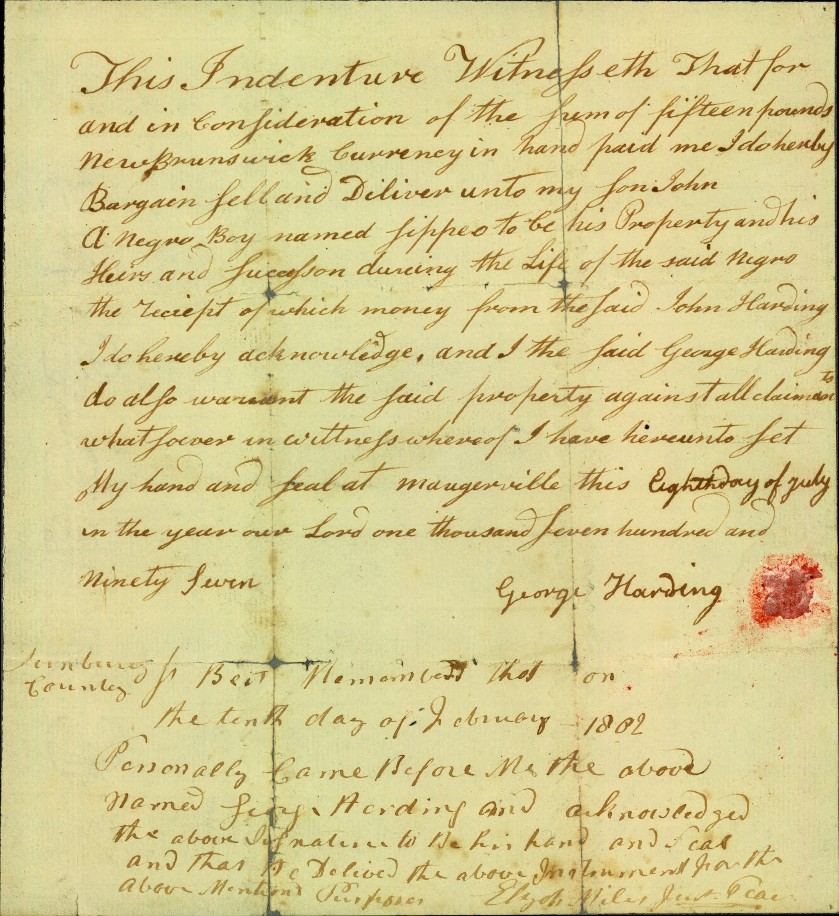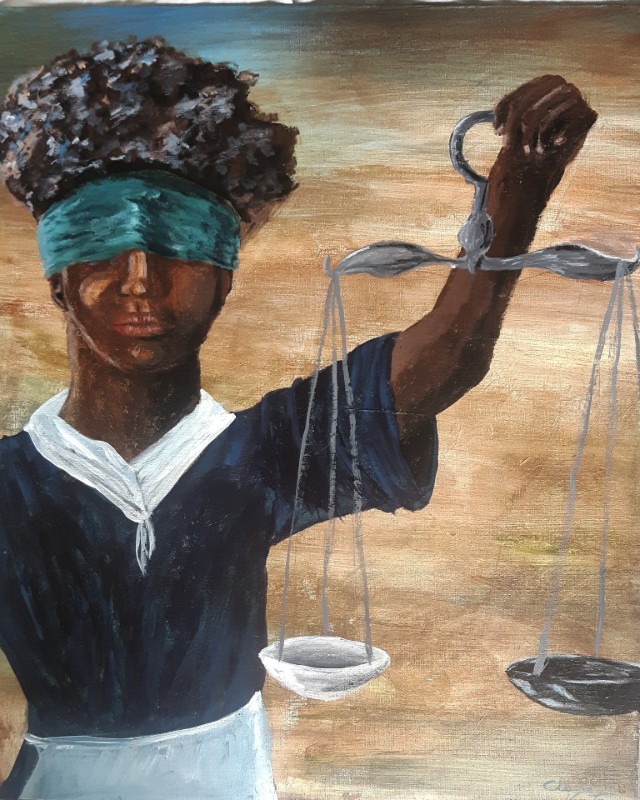Slavery in a New Land
“And I give and bequeath all my negroes (except one negro wench called Betty which I give to my son William and one negro girl not above the age of twelve years which I give to my granddaughter Rebecca Aitchison Ellegood to be chosen by my said granddaughter) and all my horses, neat cattle and livestock of every kind…”
– Will of Col. Jacob Ellegood, Dumfries, 1802
Freedom was not the case for all, however, since many Black Loyalists arrived in New Brunswick as slaves or indentured servants. Such was the case for Nancy, who came to Fredericton from Maryland between 1785 and 1786 as a slave to Caleb Jones. Slavery was legal in New Brunswick until 1834. Up until then, people could be bought or sold as property—with they and their children receiving no hope of freedom for as long as they lived. A typical bill of sale would be worded as such:
Many prominent Loyalists were slaveowners—including Col. Jacob Ellegood and Judge Isaac Allen of Kingsclear; Major John Coffin, Rev. Jonathan Odell, Cpt. William Bailey, and Cpt. Stair Agnew, all of Fredericton; Lt. Gabriel DeVeber of Burton; and George Harding and Daniel Sickles of Maugerville (to name only a few). Historian Watson Smith has estimated that more than 400 “servant” slaves were brought to the region between 1783 and 1784.

Last will and testament of Colonel Jacob Ellegood in which he gives his slaves, horses, cattle, and livestock to his son William, Dumfries, 1802.
By the turn of the century, however, the anti-slavery movement had become very active in this province. Two of the leaders in this initiative were Saint John lawyers Samuel Denny Street and Ward Chipman.
In 1800 Samuel Street and Ward Chipman challenged the legality of slavery in New Brunswick by bringing to trial the case of Nancy, an individual who had been enslaved to Caleb Jones for more than fourteen years.




